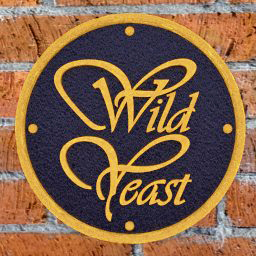Hello,
There are a few of us living in San Diego. Susan (of upside down Pyrex bowl cloche fame) and I (of no particular fame that we can talk about here) have gotten together a couple of times. Last week, we did a field trip to a place called Lakeside Poultry that no longer sells poultry (???), but does sell restaurant supplies, including 50 pound bags of flour. Susan bought a bag of Gold Medal Harvest King, and I bought a bag of Eagle Mills organic bread flour (from ConAgra, not exactly your old time mill).
I have been using Bob's Red Mill flours for years, so I decided to do a side-by-side bakeoff, making one loaf of sourdough from Bob's (BRM) and one from the new Eagle Mills (EM) flour. BRM is organic unbleached flour with a protein percentage of 11.75. The EM flour has 11 percent. Neither is malted. I used the recipe I've posted earlier here, except I used all unbleached flour in the sponges. I started a sponge for each batch of dough with one teaspoon of my 100% hydration white starter, created from the BRM flour. Due to yet another brain lapse, I neglected to photograph the sponges. For the record, BRM looked a bit more robust, thicker, but both had very good bubble populations. Here are pics of the two doughs just after the initial mix (BRM is on the left):


I did four stretch and folds, with 45 minutes between each (and before the first one), for a total fermentation time of about four hours. Both doughs were a bit tacky, and the EM dough rose a little more throughout than the BRM. After the fourth S&F, the dough rested for about 25 minutes before shaping. The BRM dough looked and felt smoother after shaping, as seen here (BRM on the left):


The loaves rested 30 minutes after shaping, then went into the oven at 425F (convection). I poured boiling water into a cast iron pan at (well, almost) the same time. I wasn't happy with the look or feel of the BRM loaf; it didn't take the scoring well, and the knife just dragged through the dough. It was also flatter looking than the EM. But the oven spring fairies were on duty! Here's the BRM loaf:

And the EM loaf:

I haven't used that center slash before, and I think I like it better than 2 or 3 diagonal ones. Both loaves had very good oven spring and color. They had decently open crumb for a 65% hydration bread.
Here's the BRM crumb:

And the EM:

So I'm not seeing much difference so far, are you? The biggest difference is the price; I order the organic Bob's Red Mill flour online, and the shipping doubles the cost of the flour ($12.00 for 20 lb. of flour plus $14.00 shipping). The 50 pound bag of Eagle Mills cost just over $18.00. Duh...
After all this, how did they taste? Well, in a side by side tasting, the clear winner is...um, well I think I liked...er, uh, actually, they tasted very similar! And this is actually good news, because I don't have to spend so much on flour anymore.
It was a fun experiment, and I was even able to keep track of which dough blob was which throughout the whole thing.
Sue



















